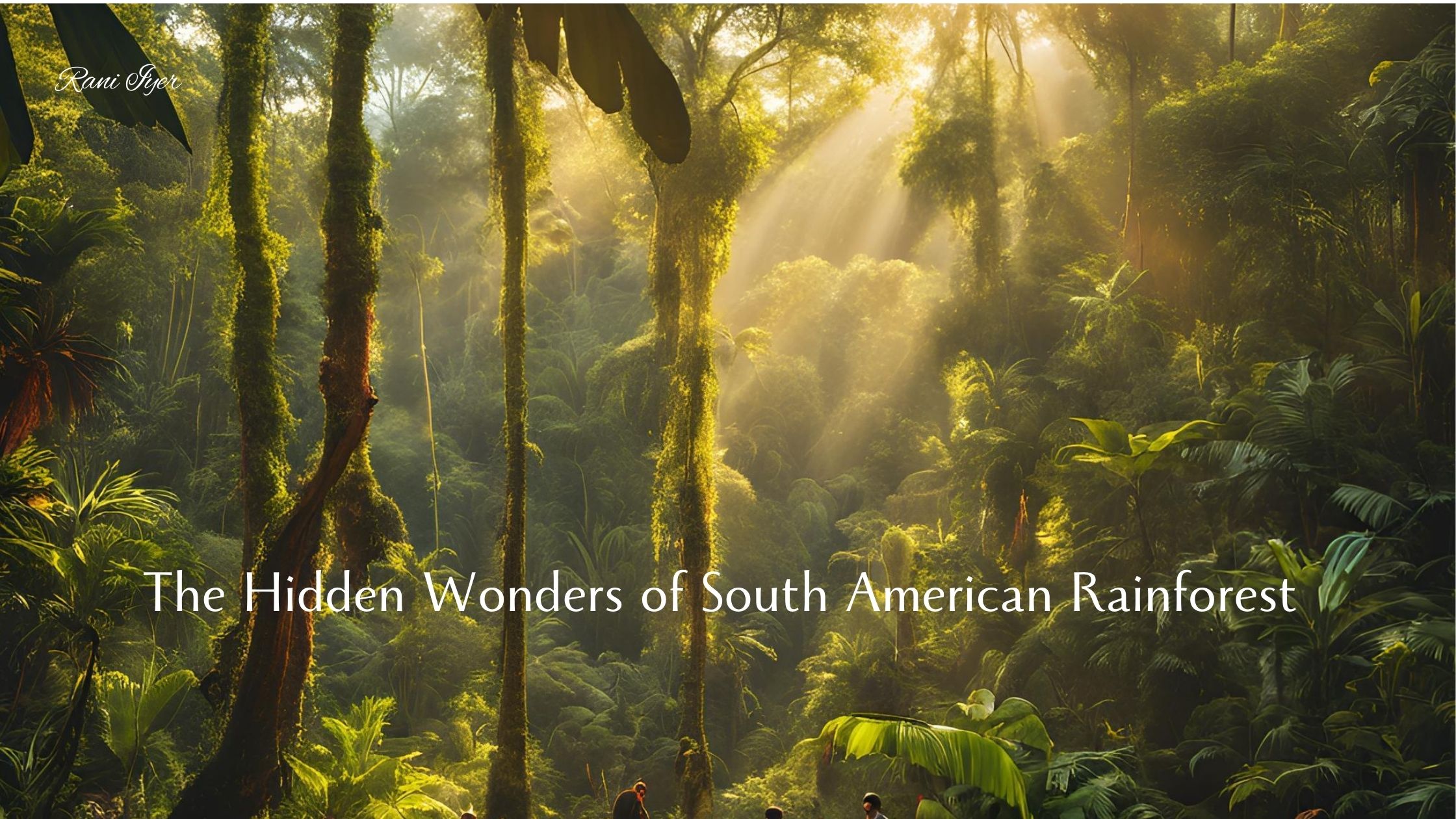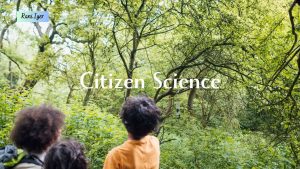Embark on an adventure through the mesmerizing landscapes of South American rainforests and unlock the secrets of its hidden wonders. From the lush Amazonian jungles to the vibrant Pantanal wetlands, this article takes you on a journey into the heart of one of the world’s most biodiverse regions.
Immerse yourself in the captivating world of South American wildlife, where jaguars stealthily stalk their prey, macaws fill the air with their vibrant colors, and sloths leisurely hang from the branches above. Discover the astounding biodiversity that thrives in these dense jungles, home to countless species of plants, animals, and insects.
Uncover the extraordinary adaptations and unique behaviors of the rainforest’s residents, and learn how they coexist in this intricate ecosystem. Through vivid descriptions and captivating stories, you will gain a deeper understanding of the interconnectedness and fragility of nature.
Join us as we explore the awe-inspiring beauty and ecological significance of South American rainforests. Get ready to be captivated by the fascinating wildlife that calls this enchanting region home.
Diversity of Wildlife in the South American Rainforest
The South American rainforest is a treasure trove of biodiversity, housing an estimated 10% of the known species on the planet. With its dense canopy and complex ecosystem, this region supports a vast array of wildlife, from the smallest insects to the largest mammals. The incredible variety of habitats, including different layers of forest, rivers, and wetlands, contributes to this exceptional richness. Each layer of the forest, from the emergent trees towering above the canopy to the shadowy understory, offers unique niches for a multitude of species to thrive.
In these rainforests, one can encounter over 1,300 species of birds, 400 species of mammals, and countless reptiles, amphibians, and insects. The colorful poison dart frogs and lush orchids are just a few examples of the unique fauna and flora that flourishes here. The interactions between these species create a dynamic web of life, where each organism plays a crucial role in maintaining the balance of the ecosystem. The sheer number of species and their interdependencies highlight the importance of preserving this extraordinary environment for future generations.
However, the diversity of wildlife is not just about the number of species; it’s also about the intricate relationships that exist among them. Pollinators, like bees and butterflies, play a vital role in the reproduction of many plants, while predators help control populations of herbivores, ensuring that no single species dominates the landscape. This interconnectivity illustrates the delicate balance of the rainforest ecosystem and underscores the need for conservation efforts to protect these vital habitats and their inhabitants.
Iconic Species of the South American Rainforest
Among the vast array of wildlife in the South American rainforest, certain species stand out as iconic representatives of this rich ecosystem. The jaguar, a powerful apex predator, is often regarded as the symbol of the Amazon. With its stunning coat of rosettes and incredible strength, the jaguar is a master of stealth, capable of taking down prey much larger than itself. Its presence is indicative of a healthy ecosystem, as it plays a critical role in maintaining population balances among other species.
Equally captivating is the vibrant macaw, which graces the rainforest with its brilliant colors and social behavior. These large parrots are known for their intelligence and complex vocalizations, often forming strong pair bonds. Macaws are not only stunning to observe but also play an essential role in seed dispersal, helping to maintain the health of the forest. Their presence is a reminder of the intricate relationships between species within the rainforest.
Another remarkable resident of the South American rainforest is the sloth, known for its slow movements and unique lifestyle. These creatures spend the majority of their lives hanging upside down from tree branches, feeding on leaves and relying on their excellent camouflage to avoid predators. The sloth’s leisurely pace is a fascinating adaptation to its environment, allowing it to conserve energy while navigating the treetops. Each of these iconic species showcases the diversity of life in the rainforest and highlights the importance of preserving their habitats.
Unique Adaptations of Rainforest Wildlife
The South American rainforest is a hotbed of unique adaptations, as the species that inhabit it have evolved remarkable traits to survive in such a challenging environment. One of the most noteworthy adaptations is the ability of many animals to blend seamlessly into their surroundings. For instance, the leaf-tailed gecko possesses a body shape and coloration that mimics the leaves of the forest floor, making it nearly invisible to both prey and predators alike. This form of camouflage is crucial for survival in the densely packed foliage of the rainforest.
Another fascinating adaptation can be found in the poison dart frogs, renowned for their vibrant colors, which serve as a warning to potential predators about their toxicity. These bright hues are a crucial survival mechanism, as they signal danger to would-be attackers. Interestingly, these frogs acquire their toxicity from the ants and other small invertebrates they consume, illustrating the interconnectedness of the ecosystem. This adaptation not only protects the frogs but also plays a role in shaping the dynamics of predator-prey relationships in the rainforest.
Additionally, many rainforest creatures exhibit specialized feeding techniques that allow them to thrive in their unique habitats. For example, the toucan, with its strikingly large bill, is not just a beautiful sight but is also an evolutionary marvel. The toucan’s bill helps it reach and consume fruit from trees that are otherwise inaccessible. This adaptation not only aids in the bird’s survival but also contributes to the dispersal of seeds, further enhancing the biodiversity of the rainforest. Such adaptations reveal the ingenuity of nature and the remarkable ways in which life has evolved to thrive in this vibrant ecosystem.
Threats to Rainforest Wildlife
Despite its incredible biodiversity, the South American rainforest faces numerous threats that jeopardize the survival of its wildlife. Deforestation remains one of the most significant challenges, driven primarily by agriculture, logging, and urban expansion. As vast tracts of forest are cleared for crops like soy and palm oil, countless species lose their habitats, leading to population declines and even extinction. The loss of trees not only affects the animals that rely on them for shelter and food but also disrupts the delicate balance of the entire ecosystem.
In addition to deforestation, climate change poses a severe threat to the wildlife of the rainforest. Rising temperatures and changing rainfall patterns can alter the habitat, making it less suitable for many species. As the climate shifts, some animals may find it difficult to adapt to the new conditions, leading to further declines in biodiversity. The increased frequency of extreme weather events, such as floods and droughts, can also devastate the delicate ecosystems within the rainforest.
Illegal wildlife trade is another pressing issue that impacts rainforest species. Many animals are hunted or captured for their exotic appearance, often resulting in severe population declines. This illicit trade not only threatens individual species but also disrupts the ecological balance, as the removal of key species can have cascading effects throughout the ecosystem. Addressing these threats requires a multifaceted approach, combining conservation efforts with sustainable development practices to protect the incredible wildlife that calls the South American rainforest home.
Conservation Efforts in the South American Rainforest
Recognizing the urgent need to protect the South American rainforest and its remarkable biodiversity, various conservation efforts have been initiated. Many organizations, both local and international, are working tirelessly to establish protected areas that serve as safe havens for wildlife. These reserves aim to preserve critical habitats while promoting sustainable land-use practices that benefit both local communities and the environment. By creating these protected spaces, conservationists hope to mitigate the impacts of deforestation and provide a refuge for endangered species.
Community-based conservation initiatives are also gaining traction in the region. Involving local populations in conservation efforts not only empowers them but also encourages sustainable practices that benefit both wildlife and livelihoods. Programs that promote ecotourism, for example, provide an economic incentive for communities to protect their natural resources while offering visitors the chance to experience the beauty of the rainforest firsthand. This collaborative approach fosters a sense of stewardship among local residents, ensuring that they have a vested interest in the health of their environment.
Moreover, scientific research plays a crucial role in conservation efforts by helping to identify at-risk species and understand the dynamics of the rainforest ecosystem. By studying the impacts of climate change, habitat loss, and human activities, researchers can develop targeted strategies to protect vulnerable species. Public awareness campaigns are also essential for garnering support for conservation initiatives, as educating people about the importance of the rainforest can inspire action and promote responsible behaviors. Together, these efforts contribute to the ongoing fight to preserve the South American rainforest for future generations.
Sustainable Tourism in the Rainforest
Sustainable tourism has emerged as a vital tool for promoting the conservation of the South American rainforest while providing economic benefits to local communities. This approach emphasizes responsible travel practices that minimize environmental impacts and support conservation efforts. Tourists are encouraged to engage with nature in ways that respect wildlife and their habitats, fostering a deeper appreciation for the beauty and complexity of the rainforest ecosystem.
Ecotourism, in particular, has gained popularity as travelers seek immersive experiences in nature. Guided tours led by knowledgeable local guides can offer insights into the unique flora and fauna of the region while emphasizing the importance of conservation. Activities such as birdwatching, wildlife photography, and hiking not only provide unforgettable memories but also generate income that can be reinvested into conservation initiatives. By choosing to participate in sustainable tourism, visitors can contribute to the preservation of the rainforest and support the livelihoods of those who depend on it.
In addition to benefiting local communities, sustainable tourism raises awareness about the challenges facing the rainforest. Tour operators often incorporate educational components into their programs, highlighting the threats to wildlife and the importance of protecting natural habitats. This knowledge can empower travelers to make informed choices about their consumption habits and support brands that prioritize sustainability. By fostering a connection between people and nature, sustainable tourism can play a pivotal role in the conservation of the South American rainforest.
Exploring the South American Rainforest: Popular Destinations
When it comes to experiencing the breathtaking beauty of the South American rainforest, several destinations stand out as must-visit locations. The Amazon Rainforest, spanning multiple countries, is perhaps the most famous and offers countless opportunities for exploration. From the bustling city of #Manaus in #Brazil, adventurers can embark on river cruises, guided jungle treks, and wildlife spotting excursions that showcase the region’s remarkable biodiversity. The Amazon’s vast network of rivers and tributaries provides a unique perspective on the rainforest, allowing visitors to immerse themselves in its beauty.
Another popular destination is the #Pantanal, the world’s largest tropical wetland, located primarily in Brazil. Renowned for its incredible wildlife viewing opportunities, the Pantanal is home to a diverse array of species, including capybaras, caimans, and the elusive jaguar. The wetland’s unique ecosystem supports a rich variety of birds and aquatic life, making it a paradise for nature enthusiasts. Visitors to the Pantanal can enjoy guided tours, photography excursions, and even horseback riding through the stunning landscape.
For those seeking a more off-the-beaten-path experience, the Ecuadorian Amazon offers a wealth of biodiversity and cultural experiences. The #Yasuni National Park is a #UNESCO World Biosphere Reserve that boasts an astonishing variety of plant and animal life. Travelers can engage with indigenous communities, learn about traditional practices, and participate in #conservation efforts while exploring the lush jungle. Each of these destinations provides a unique glimpse into the wonders of the South American rainforest, offering unforgettable experiences for those willing to venture into this enchanting world.
Tips for Wildlife Spotting in the Rainforest
Spotting wildlife in the South American rainforest can be an exhilarating experience, but it often requires patience and a bit of strategy. One of the most important tips for successful wildlife viewing is to move quietly and slowly through the forest. Many animals, particularly the more elusive species, are sensitive to noise and movement. By adopting a calm demeanor, you increase your chances of encountering wildlife in their natural habitat. Staying alert and observant can lead to unexpected sightings, whether it’s a sloth lazily hanging from a tree or a #toucan perched overhead.
Timing is also crucial when it comes to wildlife spotting. Early mornings and late afternoons are often the best times to observe animals, as many species are most active during these cooler parts of the day. Additionally, certain animals may be more visible during specific seasons or weather conditions. Researching the habits of the wildlife you hope to see can enhance your chances of a successful sighting. Local guides can provide invaluable insights into the best times and locations for viewing particular species.
Lastly, investing in the right gear can significantly improve your wildlife spotting experience. A good pair of binoculars is essential for observing distant animals without disturbing them. A camera with a zoom lens allows for capturing stunning images of the rainforest’s inhabitants. Additionally, wearing appropriate clothing, such as lightweight, breathable fabrics and sturdy footwear, can make your exploration more comfortable. By following these tips, you can enhance your experience in the South American rainforest and create lasting memories of its incredible wildlife.
Embracing the Wonder of South American Rainforest Wildlife
The South American rainforest is a realm of extraordinary beauty and unparalleled biodiversity. Its rich tapestry of life, from the majestic jaguar to the vibrant macaw, showcases the incredible adaptations and interconnections that define this unique ecosystem. As we explore the hidden wonders of the rainforest, we are reminded of the fragility of these habitats and the urgent need for conservation efforts to protect them.
Embracing the wonders of the South American rainforest goes beyond mere observation; it calls for a commitment to sustainability and responsible stewardship of our planet. By supporting conservation initiatives, participating in sustainable tourism, and advocating for the protection of these vital ecosystems, we can all play a role in preserving the magic of the rainforest for future generations.
As we conclude our journey through this enchanting region, let us carry with us the stories of its inhabitants and a renewed sense of responsibility to safeguard the delicate balance of life that thrives within the South American rainforest. Each visit, each experience, and each encounter with nature serves as a reminder of the interconnectedness of all living things and the importance of protecting our planet’s incredible biodiversity.


